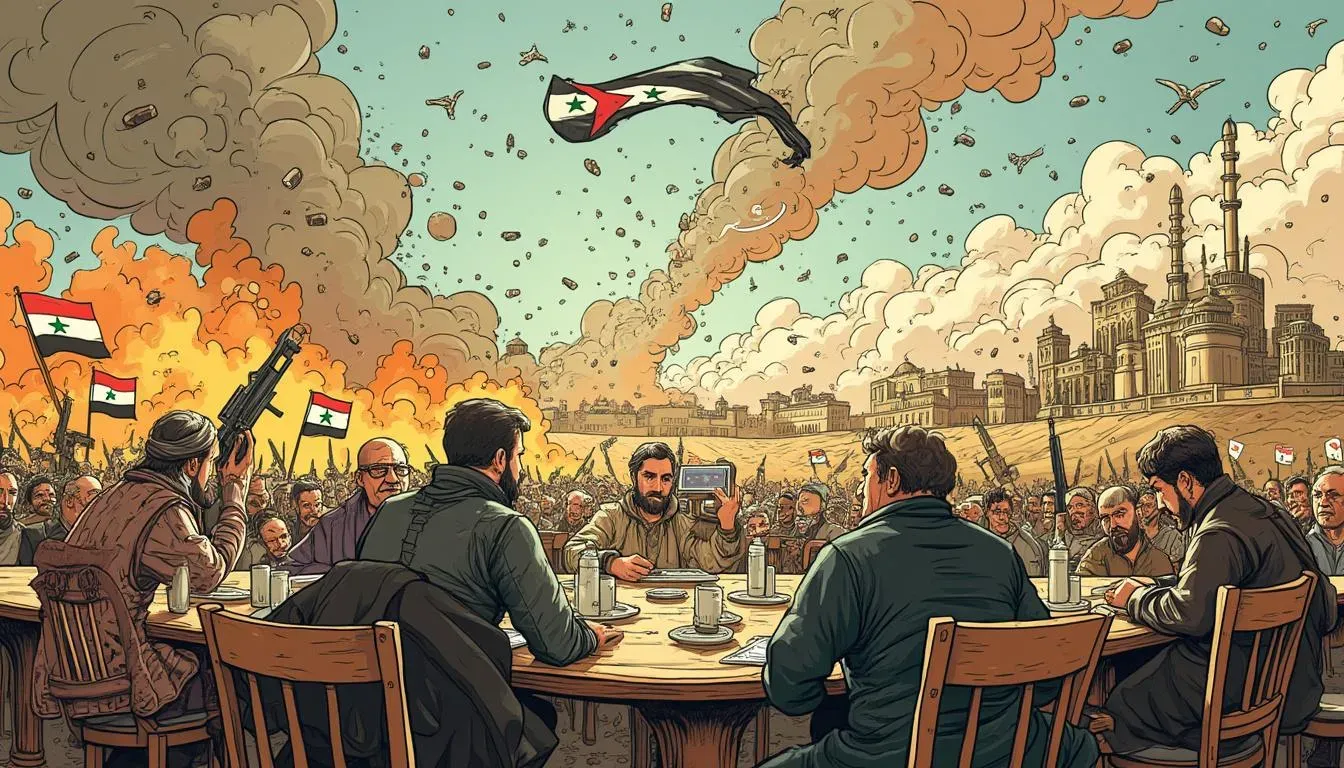Introduction
The Syrian civil war, which erupted in 2011, is arguably one of the most devastating conflicts of the 21st century. Originating from a series of protests, the war quickly escalated into a multifaceted conflict involving various local factions and international powers. As of now, a significant shift seems to be underway in the region, suggesting a potential transition from war to peace.
The latest developments in Syria represent both hope and uncertainty for the region and its people.
Historical Context: The Roots of Syria's Civil War
The origins of the conflict lie in socio-political grievances and the failure of Bashar al-Assad's regime to address calls for reform. What began as peaceful demonstrations led by pro-democracy activists in town squares rapidly devolved into a brutal civil war. Assad’s regime responded forcefully, using military might to suppress dissent. These actions exacerbated tensions, leading to the militarization of protests and chaos across Syria.
The uprising was initially sparked by the arrest of 15 schoolboys in Daraa, whose mistreatment galvanized public protest.
External Influences and the Role of International Players
The conflict attracted significant foreign interest, with countries like Russia, Iran, and Turkey playing influential roles. Russia's alignment with Assad secured a Mediterranean foothold, while Iran's involvement strengthened its regional influence through Syria. Conversely, Turkey backed opposition Islamist groups, seeking a stable regime sympathetic to its political ideologies.
The Astana Process
Key external players attempted diplomatic interventions, organizing meetings known as the Astana process. These meetings involved Turkey, Iran, and Russia in finding a political solution, albeit with limited success in bringing about immediate peace or transitions.
The Latest Developments: A Promising Transition?
Recently, the situation in Syria has seen rapid changes. Rebel groups have made significant advances from multiple fronts, pressurizing the Assad regime, which saw defections and swift retreats. These developments have prompted discussions led by foreign ministers from Turkey, Russia, and Iran, suggesting a managed transition of power within Syria.
The Role of Rebel Groups
The rebel group's dynamics are pivotal in shaping Syria’s future. While the leader of the primary rebel coalition, Hay'at Tahrir al-Sham (HTS), promises peaceful transitions, the coalition’s assurance to respect minority rights remains under scrutiny. The international community and local factions await HTS’s efforts to govern effectively without reverting to extremist ideologies.
- Abu Mohamed al-Jolani of HTS: Promises a peaceful transition, but with reservations due to HTS's past associations with jihadist activities.
Challenges Facing a Peaceful Transition
Syria’s multi-ethnic and religiously diverse demographics present considerable challenges. The Alawite minority, traditionally supporting Assad, alongside Sunni, Kurdish, and other ethnic groups, complicate the potential for unified governance.
Complications From Kurdish and ISIS Activities
Turkey’s proximity and historical contentions with Kurdish groups add layers of complexity. The Kurdish factions’ control in the north and their management of ISIS detainment camps could ignite regional tensions. Inadequate handling of these relationships risks a resurgence of ISIS activities, stirring instability once more.
The Geopolitical Stakes for Global Powers
Global geopolitics plays a critical role in determining Syria's path forward. For Russia, maintaining a strategic presence in the Mediterranean via the Tartus naval base is vital for its regional interests. For the U.S., cautious engagement remains crucial, with ongoing special forces operations in southeast Syria aiming to contain ISIS movements.
The international community remains vigilant, wary of Syria potentially falling into a state of perpetual chaos akin to Libya.
The Human Cost and Prospects for Displaced Syrians
The war has displaced millions, creating a vast diaspora and a humanitarian crisis of immense proportions. As conditions stabilize, Syrians abroad cautiously consider returning, contingent on assurances of safety and the absence of oppressive governance.
Images of Hope
Recent images have surfaced depicting Syrians celebrating in countries like Iraq and Turkey. These resonate as symbols of hope, indicating Syrians’ eagerness to rebuild their lives and secure a stable future.
Conclusion: The Path Forward for Syria
As the world watches, Syria stands on a precipice. The success of the current transition depends heavily on the pragmatic cooperation of internal factions and external stakeholders. A peaceful, inclusive framework attentive to Syria’s diverse social fabric could usher in a new era of stability and growth.
The journey to peace in Syria is fraught with challenges, yet remains a beacon of hope and resilience for its war-torn citizens.
SYRIA, PEACE TRANSITION, YOUTUBE, POLITICS, GEOPOLITICS, MIDDLE EAST, CIVIL WAR, INTERNATIONAL RELATIONS

